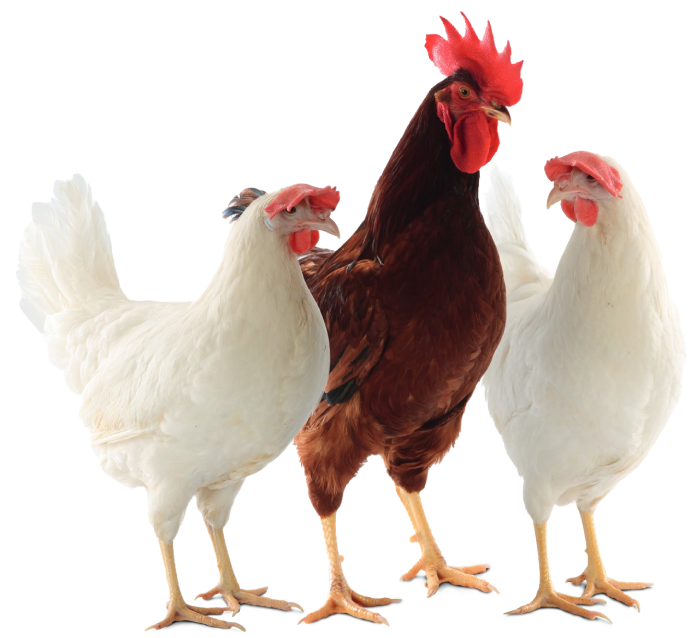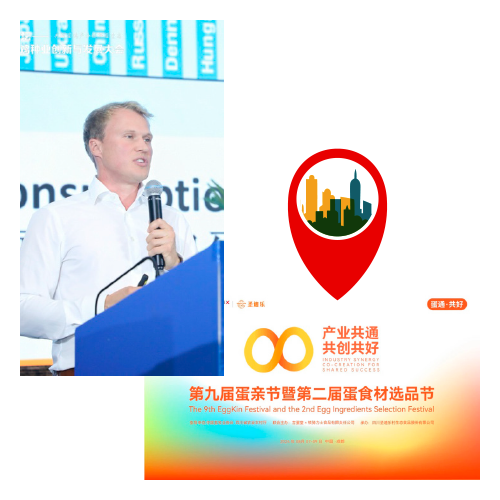Genetic progress will continue
Modern layer hybrids nowadays already show an amazing performance level under good management conditions. Nevertheless, the genetic progress will continue as the industry demands even more prolific layers for an increased profitability in overall egg production. Therefore, the mayor breeding aims will continue to be of an outstanding importance in the breeding index. Those are increased laying persistence and longer viability with the aim of more saleable eggs per hen housed. Today we are speaking about the 500-egg-laying-hen or using hens up to 100 weeks. Maybe we see higher numbers in rate of lay and working lifetime-period very soon. New selection tools like genomic selection will support this progress. So the industry needs to catch up with the genetic potential which is already in place and will challenge all players in our industry furthermore.
Better understanding of rearing as a basic investment
Under the production aims mentioned before the rearing period of modern layers needs to be understood as the overall basic investment in the following production period. Even with better or more expensive rearing the rearing costs per egg will decrease along with an increased production during lay. Nowadays, rearing quite often is supposed to be a time of wasting money. Good understanding of rearing pullets needs to be based on the biologically given growth profile. Optimal body weight development during early stage of growth and adopted growth intensity in the second half of the rearing period are crucial requests. This means that either underweight or overweight at the end of rearing need to be avoided. High emphasis needs to be laid on an optimal nutrition and management during the transition period. The high importance of managing the “pre lay period” in terms of nutrition and farm management cannot get enough focus – as there is the basic rule: good start – good performance during the rest of hens’ life.
Continuous focus on egg shell quality in late lay
Based on continuous ovulation, hens will produce an egg until they might be slaughtered. Therefore, the egg shell quality will be the main one-and-only reason when signing off a high prolific layer flock. Over the last years it has been quite easy to achieve a sufficient egg shell quality in a one-year-production-circle, which means approximately up to 72 weeks of age. If laying farmers nowadays and in the future will try to utilize the full genetic potential of the hen, they are immediately faced with the topic of how to support egg shell quality in an aging flock. The most important request is the basic support of calcium as ‘nutrient’ for the egg shell. Additionally, there are a lot of other very creative tools available to support the hen basically when aging and as powerful feed additives. Some of these might be costly but will easily be cost effective when more saleable eggs with good egg shell quality can be achieved.
Nutrition – achieving more with less? Modern layer nutrition needs to focus on the best efficiency because feed basically will not be really cheap in the future. The world economy is facing an increased demand for raw materials for feed- and foodproduction. This leads to high volatility and shortage of raw materials periodically. Reduction of crude protein together with more emphasis on digestible amino acids will be one of the mayor aspects. Furthermore, the use of feed enzymes offers great opportunities to gain more nutrients out of the common raw materials. So NSP-enzymes gain more nutrients out of our nowadays´ common raw materials already – it can be expected that new products with this mode of action are already in the pipeline. As a well

Figure 1: Ongoing genetic progress with Lohmann layers
accepted and prominent example phytase as feed additive needs to be mentioned, it has reduced the necessity of adding phosphates as raw material into the diets to a high extent already. It can be expected that quite soon a new phosphorus evaluation system will be introduced in poultry nutrition with generally lower levels of phosphorus in our diets than today. New knowledge and better products with regard to phytases will support this progress. Feeding on gut health with aiming for better nutrient absorption will support the headline of this chapter additionally – which even promotes the utilisation of new feed additives of non-antibiotic activity.
Economic of high dense feed versus lower dense feed
Having a worldwide view on layer nutrition we are facing a high variability in the raw material composition and nutrient density of the diets. Nevertheless the performance of nowadays´ layer birds is quite the same all over the world – as long as the birds are able to adjust their daily feed intake in order to fulfil their daily nutrient demand. Quite often the birds are not getting the permission and will suffer from nutritional deficiencies under lower dense feed. The cost efficiency of a high dense o r lower dense feed will mainly be based on the raw material availability and production aims. Even with most layers being fed with so called corn-soy-diets it is possible to feed the hens without any corn and even without any soy. Those diets might show less nutrient density. Nevertheless, the hens are able to show excellent performance as long as they are able to and they are getting the permission to adjust the daily feed intake to the nutritional demand. Those diets might even be more cost efficient if corn and soy are very rare to purchase.
Raw material availability and new raw materials?
As already mentioned it is not normal at all times to have sufficient raw materials in terms of quantity and quality available for feed production. Hence, diets might not be as constant as they had been in the past, which can even offer opportunities to widen the raw material basis and experience with this in formulating layer diets. Additionally we see an increased interest in really new raw materials which might be insects, larvae and algae from the sea. Scientifically based trials are published more and more showing good opportunities of using these really new raw materials. This strategy in addition offers the chance to reduce the inclusion of probably costly raw materials like soya or fish meal for instance.
Clean food from clean feed
Consumer health is an important topic when it comes to feeding our world population. In the so called developed countries healthy food and health claims are of high priority when creating the daily meal. This demands healthy and safe raw materials to produce that food, which are eggs, meat and milk basically. In order to produce these native products animals need to be fed with safe and clean feed. This topic might cover contamination with bacteria like salmonella or not wanted contaminants. This basic request will set big pressure on the feed industry and especially on homemixed feed to fulfil those demands. Thus feed hygienisation will become a new or increasing challenge. Those procedures are already quite often used in feed production for breeder flocks and show good practicability – if one really wants to use them.
Influence from animal welfare thoughts and retailers on egg production
Animal husbandry in general and egg production as well are of high interest from an animal welfare point of view. This already has a big impact on production procedures of milk, meat and eggs for instance in a lot of countries. In addition retailers and supermarkets have their own thoughts to promote sales of food with animal welfare claims. In terms of poultry feed this quite often starts with the ban of feed additives with antibiotic activity. With regard to layers the most common topic is the idea to move away from the well established cage housing to different alternative housing system. As an extreme version we see the organic production in a lot of countries based on free range systems and sometimes strange nutritional rules. Some European countries are actually facing the challenge that any kind of beak treatment will not be permitted any longer in the very near future.
Robert Pottgueter
Modern layer hybrids nowadays already show an amazing performance level under good management conditions. Nevertheless, the genetic progress will continue as the industry demands even more prolific layers for an increased profitability in overall egg production. Therefore, the mayor breeding aims will continue to be of an outstanding importance in the breeding index. Those are increased laying persistence and longer viability with the aim of more saleable eggs per hen housed. Today we are speaking about the 500-egg-laying-hen or using hens up to 100 weeks. Maybe we see higher numbers in rate of lay and working lifetime-period very soon. New selection tools like genomic selection will support this progress. So the industry needs to catch up with the genetic potential which is already in place and will challenge all players in our industry furthermore.
Better understanding of rearing as a basic investment
Under the production aims mentioned before the rearing period of modern layers needs to be understood as the overall basic investment in the following production period. Even with better or more expensive rearing the rearing costs per egg will decrease along with an increased production during lay. Nowadays, rearing quite often is supposed to be a time of wasting money. Good understanding of rearing pullets needs to be based on the biologically given growth profile. Optimal body weight development during early stage of growth and adopted growth intensity in the second half of the rearing period are crucial requests. This means that either underweight or overweight at the end of rearing need to be avoided. High emphasis needs to be laid on an optimal nutrition and management during the transition period. The high importance of managing the “pre lay period” in terms of nutrition and farm management cannot get enough focus – as there is the basic rule: good start – good performance during the rest of hens’ life.
Continuous focus on egg shell quality in late lay
Based on continuous ovulation, hens will produce an egg until they might be slaughtered. Therefore, the egg shell quality will be the main one-and-only reason when signing off a high prolific layer flock. Over the last years it has been quite easy to achieve a sufficient egg shell quality in a one-year-production-circle, which means approximately up to 72 weeks of age. If laying farmers nowadays and in the future will try to utilize the full genetic potential of the hen, they are immediately faced with the topic of how to support egg shell quality in an aging flock. The most important request is the basic support of calcium as ‘nutrient’ for the egg shell. Additionally, there are a lot of other very creative tools available to support the hen basically when aging and as powerful feed additives. Some of these might be costly but will easily be cost effective when more saleable eggs with good egg shell quality can be achieved.
Nutrition – achieving more with less? Modern layer nutrition needs to focus on the best efficiency because feed basically will not be really cheap in the future. The world economy is facing an increased demand for raw materials for feed- and foodproduction. This leads to high volatility and shortage of raw materials periodically. Reduction of crude protein together with more emphasis on digestible amino acids will be one of the mayor aspects. Furthermore, the use of feed enzymes offers great opportunities to gain more nutrients out of the common raw materials. So NSP-enzymes gain more nutrients out of our nowadays´ common raw materials already – it can be expected that new products with this mode of action are already in the pipeline. As a well

Figure 1: Ongoing genetic progress with Lohmann layers
accepted and prominent example phytase as feed additive needs to be mentioned, it has reduced the necessity of adding phosphates as raw material into the diets to a high extent already. It can be expected that quite soon a new phosphorus evaluation system will be introduced in poultry nutrition with generally lower levels of phosphorus in our diets than today. New knowledge and better products with regard to phytases will support this progress. Feeding on gut health with aiming for better nutrient absorption will support the headline of this chapter additionally – which even promotes the utilisation of new feed additives of non-antibiotic activity.
Economic of high dense feed versus lower dense feed
Having a worldwide view on layer nutrition we are facing a high variability in the raw material composition and nutrient density of the diets. Nevertheless the performance of nowadays´ layer birds is quite the same all over the world – as long as the birds are able to adjust their daily feed intake in order to fulfil their daily nutrient demand. Quite often the birds are not getting the permission and will suffer from nutritional deficiencies under lower dense feed. The cost efficiency of a high dense o r lower dense feed will mainly be based on the raw material availability and production aims. Even with most layers being fed with so called corn-soy-diets it is possible to feed the hens without any corn and even without any soy. Those diets might show less nutrient density. Nevertheless, the hens are able to show excellent performance as long as they are able to and they are getting the permission to adjust the daily feed intake to the nutritional demand. Those diets might even be more cost efficient if corn and soy are very rare to purchase.
Raw material availability and new raw materials?
As already mentioned it is not normal at all times to have sufficient raw materials in terms of quantity and quality available for feed production. Hence, diets might not be as constant as they had been in the past, which can even offer opportunities to widen the raw material basis and experience with this in formulating layer diets. Additionally we see an increased interest in really new raw materials which might be insects, larvae and algae from the sea. Scientifically based trials are published more and more showing good opportunities of using these really new raw materials. This strategy in addition offers the chance to reduce the inclusion of probably costly raw materials like soya or fish meal for instance.
Clean food from clean feed
Consumer health is an important topic when it comes to feeding our world population. In the so called developed countries healthy food and health claims are of high priority when creating the daily meal. This demands healthy and safe raw materials to produce that food, which are eggs, meat and milk basically. In order to produce these native products animals need to be fed with safe and clean feed. This topic might cover contamination with bacteria like salmonella or not wanted contaminants. This basic request will set big pressure on the feed industry and especially on homemixed feed to fulfil those demands. Thus feed hygienisation will become a new or increasing challenge. Those procedures are already quite often used in feed production for breeder flocks and show good practicability – if one really wants to use them.
Influence from animal welfare thoughts and retailers on egg production
Animal husbandry in general and egg production as well are of high interest from an animal welfare point of view. This already has a big impact on production procedures of milk, meat and eggs for instance in a lot of countries. In addition retailers and supermarkets have their own thoughts to promote sales of food with animal welfare claims. In terms of poultry feed this quite often starts with the ban of feed additives with antibiotic activity. With regard to layers the most common topic is the idea to move away from the well established cage housing to different alternative housing system. As an extreme version we see the organic production in a lot of countries based on free range systems and sometimes strange nutritional rules. Some European countries are actually facing the challenge that any kind of beak treatment will not be permitted any longer in the very near future.
Robert Pottgueter






